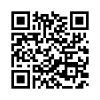KEEFEKTIFAN PEMBELAJARAN CIRC DAN MODEL SINEKTIK PADA KETERAMPILAN MENULIS TEKS DESKRIPSI SISWA KELAS VII SMP NEGERI 12 KOTA MAGELANG
Downloads
(Title: The Effectiveness of CIRC Learning and Sinectic Models on Description Text Writing Skills Class VII Students of SMPN 12 Magelang). The purpose of this study was to identify comparison of the effectiveness between: (1) the use of CIRC; (2) the use of synectics; and (3) the use of CIRC and synectics methods in the teaching of descriptive text writing skill to junior secondary school students. The experimental design that is used is the pretest-post test control group design with two experimental groups, where treatments of CIRC and synectics methods were applied to each group, and one control group got the conventional learning method. The sample of this study was all of grade 7 students of Junior Secondary School 12 of Magelang Municipality.. The data were collected through assessment rubrics of descriptive text writing skills. The instrument was validated through the content validity with expert judgement. The data were analysed by Anova followed by Scheffe test. The research findings showed that: (1) CIRC method was more effective than conventional teaching method; (2) the synectics method was more effective than conventional learning method; and (3) the CIRC method was more effective than synectics method.
Keywords: effectiveness, learning, circ, synectics, descriptive text writing.
Downloads
Akhadiah, S., Arsjad, M. & Ridwan, S. (1988). Pembinaan Kemampuan Menulis Bahasa Indonesia. Jakarta: Erlangga.
Alwasilah, C. & Senny. (2005). Pokoknya Menulis. Bandung: Kiblat Buku Utama
Depdikbud. (2013). Peraturan Menteri Pendidikan dan Kebudayaan Republik Indonesia Nomor 81 A, Tahun 2013, Tentang Implementasi Kurikulum.
Dimkow, S. (2013). Collaborative Production System Design Through Usit Method. Bulgaria: Technical University of Sofia. International Journal of Engineering. Diambil Pada Tanggal 28 Mei 2016, Dari Http ://Annals. Fih. Upt.Ro.
Durukan, E. (2011). Effects of Cooperative Intregrated Reading And Composition (CIRC) Technique on Reading –Writing Skill. Educational Research And Reviews Vol.6 (1), Pp. 102-109, January 2011. Diambil Pada Tanggal 6April 2017,Dariavailableonlineaterror! Hyperlink Reference Not Valid..ISSN 1990-3839 ©2011 Academicjournals.
Hummel, L. (2006). Synectics For Creative Thinking In Thehcnology Education. The Technology Teacher. Reston 66.3 (Nov 2006): 22-27. ihttp://Search. Proquest.Com/Docview/235290687/Fulltext
Indrianingrum, R. T. ( 2015). Media Foto untuk Meningkatkan Keterampilan Menulis Deskripsi Siswa SMA Negeri 2 Kebumen. Lingtera, Jurnal Penelitian Bahasa, Sastra, dan Pembelajarannya. Vol.2. Nomor 1. Http:/ Journal.Uny.Ac.Id/Index.Php/Ljtp.
Joyce, B. & Weil, M. (1996). Model Of Teaching. USA: Allyn & Bacon A. Simon &Schuster Company.
Kusmana, S. (2014). Kreativitas Menulis. Yogyakarta: Ombak.
Lindblom, K. (2004). Teaching English in The World. English Journal, High School Edition; Urbana 93.3 (Jan 2004): 84-87. Http://Search.Proquest.Com /Docview/ 237301636/ 7077D4D9929.
Semi , M. A. (2007). Dasar-Dasar Keterampilan Menulis. Bandung: Angkasa.
Slavin, R. E. (2010). Cooperatif Learning. Teori, Riset dan Praktik. (Terjemahan Narulita Yusron) Bandung: Nusa Media.
Suherli. (2007). Menulis Karangan Ilmiah. Jakarta: Arya Duta.
Syamsi, K. (2012). Model Perangkat Pembelajaran Menulis Berdasarkan Pende-katan Proses Genre bagi Siswa SMP. Litera, Jurnal Penelitian Bahasa, Sastra, dan Pembelajarannya. Volume 11, Nomor 2, Oktober 2012, ISSN 1412-2596.
Tarigan, M. (15 April 2016). Terpuruknya Peringkat Literasi. Tempo, Hlm. 5.
Tompkins, G.E. & Hoskisson, K. (1995).Language Arts: Content And Teaching Strategies. New Jersey: Merrill An Imprint Of Prentice Hall.
Suparno & Yunus, M. (2006). Keterampilan Dasar Menulis. Jakarta: Universitas Terbuka Depdiknas.
The authors who publish this journal agree to the following requirements. The author retains the copyright regarding the work being simultaneously licensed below Creative Commons Attribution ShareAlike License.

Jurnal Diksi by Faculty of Languages, Arts, and Culture, Universitas Negeri Yogyakarta is licensed under a Creative Commons Attribution-ShareAlike 4.0 International License.
Based on a work at http://journal.uny.ac.id/index.php/diksi




















